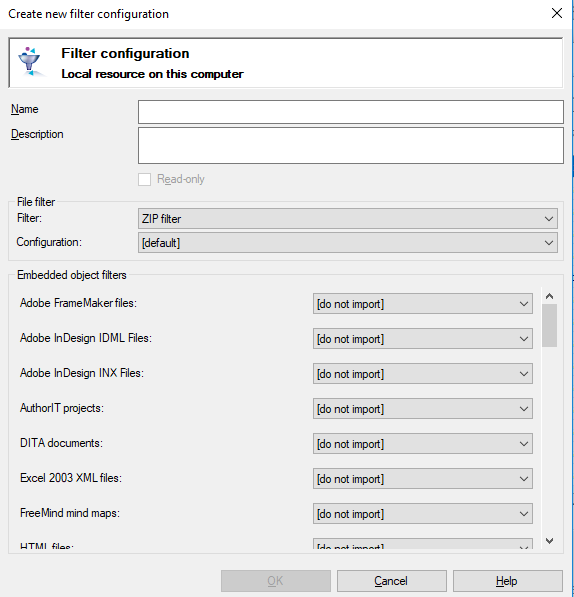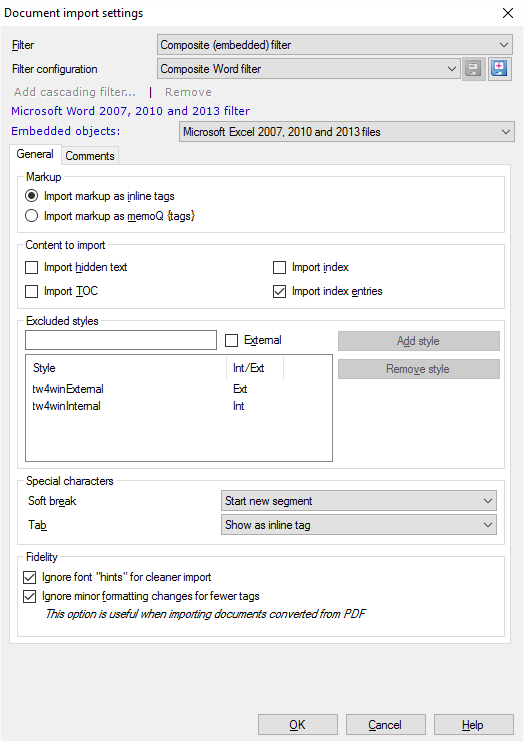Add filter for embedded documents
Microsoft Office files can include embedded objects. An embedded object is practically another document within the document. The embedded object can be a different document type.
When memoQ imports a document, it can import the embedded objects from DOCX, XLSX, and PPTX files. These objects will appear in the project as separate documents.
When you import a document, memoQ can simply import all embedded objects with the default settings. You can choose this in the Document import options window.
To fine-tune the import of embedded objects, you need to create a composite filter configuration. You need to prepare this in the Resource console: you can't do it while you import the document.
memoQ supports the import of embedded objects from ZIP packages and MS Office files (versions 2007 and newer: DOCX, XLSX, PPTX). The embedded files themselves can be of any format which is supported both by memoQ and MS Office (this includes, besides MS Office formats, HTML, XML and PDF, and image formats).
How to get here
Open the Resource console, and choose Filter configurations. Below the list of filter configurations, click Create filter for embedded documents.

Office files: memoQ can import embedded images and other Office files

ZIP files: memoQ can import any file format it can handle
What can you do?
Name the filter: Type a name in the Name box, and a longer description in the Description box. You can skip the description.
Choose a main file type and a configuration:
- Choose a file type in the Filter drop-down box. You can choose from Word, Excel, PowerPoint or ZIP.
- Choose a configuration: You can stay with the default configuration. But if you have custom filter configurations for the main file, you can choose from them, too.
- Choose filters for the embedded documents: memoQ can import embedded objects that are listed under Embedded object filters. For each type of embedded objects, there is a drop-down box. You can choose a configuration there. It can be the default configuration, or you can choose a custom filter configuration for each object type - if there is one.
Or, you can tell memoQ to not import objects of that type: In that case, choose [do not import] from the drop-down box for the object type.
After the composite filter is saved, you can use it to import documents.
- In the Create new filter configuration window: Click OK. In the Resource console window, click Close.
- Open a project. In Project home, choose Translations.
- In the translations list, right-click the empty area. In the menu, choose Import with Options.
- In the Document import options window, click Change filter and configuration or Change filter and configuration for all. The Document import settings window appears.
- In the Filter drop-down box, choose Composite filter. In the Filter configuration drop-down box, choose the new filter configuration:

- To change the settings of the main filter: Click the name of the main filter first.
- To change the settings of a filter for embedded objects: Choose an embedded object type from the Embedded objects drop-down box. Then click Embedded objects.
When you finish
Click OK to create the composite filter.
Click Cancel to leave the Create new filter configuration window without creating a filter configuration.